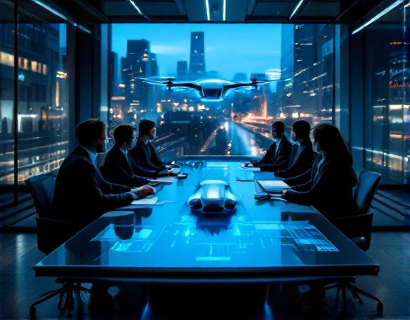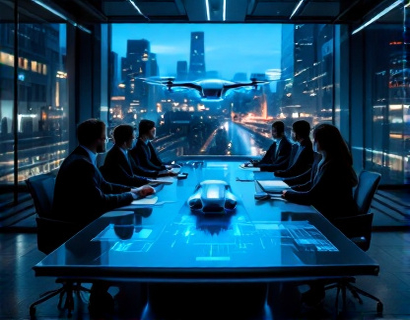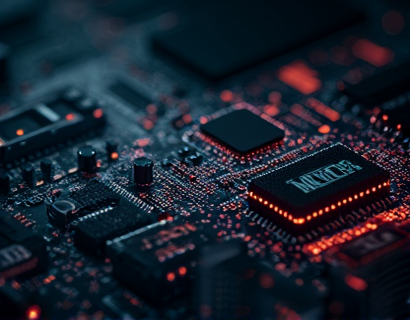AI-Driven Efficiency in Aeronautics: Transforming Businesses with Intelligent Automation Solutions
The aeronautics industry stands at the forefront of technological innovation, where the integration of Artificial Intelligence (AI) is revolutionizing traditional operations. This transformation is not merely an incremental improvement but a fundamental shift in how businesses operate, make decisions, and innovate. AI-driven solutions are redefining efficiency, accuracy, and sustainability in the aeronautics sector, offering unprecedented opportunities for companies to stay competitive and adapt to the dynamic market demands.
Optimizing Operations through AI
One of the most significant impacts of AI in aeronautics is the optimization of operations. AI agents can process vast amounts of data from various sources, including flight schedules, maintenance records, and weather forecasts, to streamline operations. For instance, predictive maintenance powered by AI can analyze sensor data from aircraft components to predict failures before they occur. This proactive approach reduces downtime, lowers maintenance costs, and enhances overall fleet availability. By automating routine maintenance tasks and providing real-time insights, AI enables airlines and manufacturers to allocate resources more efficiently and focus on higher-value activities.
Supply chain management is another area where AI drives significant improvements. AI algorithms can optimize inventory levels, forecast demand, and streamline logistics. For example, by analyzing historical data and current trends, AI can predict the optimal timing for ordering spare parts, ensuring that inventory levels are neither too high nor too low. This not only reduces storage costs but also minimizes the risk of stockouts. Additionally, AI can optimize flight routes and schedules, taking into account factors like air traffic, weather conditions, and fuel efficiency, leading to more punctual flights and reduced fuel consumption.
Enhancing Decision-Making with AI
AI is also transforming decision-making processes in the aeronautics industry. By providing actionable insights and data-driven recommendations, AI helps stakeholders make informed decisions quickly. For instance, AI can analyze market trends, customer behavior, and operational metrics to identify opportunities for growth and areas for improvement. This capability is particularly valuable for airlines and aerospace manufacturers looking to expand their market share or enter new markets.
Risk management is another critical area where AI enhances decision-making. AI systems can monitor and analyze a wide range of data points, from financial indicators to regulatory changes, to identify potential risks and suggest mitigation strategies. This proactive risk management approach helps businesses avoid costly surprises and ensures compliance with evolving regulations. For example, AI can detect anomalies in financial transactions that may indicate fraud or mismanagement, allowing for timely intervention.
Driving Innovation through AI
The aeronautics industry is inherently innovative, and AI is a key driver of this innovation. AI enables the development of new technologies and services that were previously unimaginable. For instance, AI-powered autonomous drones are transforming aerial surveillance, delivery services, and inspection tasks. These drones can operate with minimal human intervention, reducing costs and increasing safety. In the manufacturing sector, AI-driven design tools can optimize aircraft designs for better performance, fuel efficiency, and cost-effectiveness. These tools simulate various design scenarios, allowing engineers to test and refine their concepts rapidly.
AI is also fostering innovation in the area of passenger experience. Personalized services, enhanced safety features, and seamless travel experiences are becoming the norm, thanks to AI. For example, AI-driven chatbots and virtual assistants can provide customers with real-time information, answer queries, and assist with bookings and check-ins. These interactions are not only efficient but also enhance the overall customer experience, leading to higher customer satisfaction and loyalty.
Challenges and Considerations
While the benefits of AI in aeronautics are substantial, there are challenges and considerations that businesses must address. One of the primary concerns is data security and privacy. The aeronautics industry handles sensitive information, and ensuring the integrity and confidentiality of this data is paramount. Implementing robust cybersecurity measures and adhering to strict data protection regulations are essential to mitigate risks.
Another challenge is the need for skilled professionals who can develop, implement, and maintain AI systems. The aeronautics industry must invest in training and development programs to build a workforce capable of leveraging AI technologies effectively. Collaboration with educational institutions and technology partners can help bridge this skills gap.
Regulatory compliance is also a critical factor. The aeronautics sector is heavily regulated, and AI solutions must meet stringent safety and operational standards. Working closely with regulatory bodies and ensuring that AI systems are transparent and explainable is crucial for gaining trust and approval.
Case Studies and Real-World Applications
Several leading aeronautics companies have already begun integrating AI into their operations with notable success. For example, a major airline implemented an AI-powered predictive maintenance system that reduced maintenance costs by 15% and increased fleet availability by 10%. Another aerospace manufacturer used AI-driven design tools to reduce the time-to-market for a new aircraft model by 20%, while also improving fuel efficiency by 5%. These case studies demonstrate the tangible benefits of AI in enhancing operational efficiency, reducing costs, and driving innovation.
A regional airline leveraged AI to optimize its flight schedules and routes, resulting in a 12% reduction in fuel consumption and a significant decrease in carbon emissions. This not only improved the company's bottom line but also aligned with its sustainability goals. Another example is a drone manufacturer that used AI to develop autonomous inspection drones for infrastructure monitoring, reducing inspection times by 50% and improving safety.
Future Trends and Opportunities
The future of AI in aeronautics is promising, with several emerging trends and opportunities on the horizon. One such trend is the integration of AI with the Internet of Things (IoT) to create smart aircraft and smart airports. IoT devices can collect real-time data from various parts of the aircraft and airport infrastructure, which AI can analyze to optimize operations and enhance safety. For instance, smart sensors can monitor the health of aircraft components, predict maintenance needs, and ensure that the aircraft is always in optimal condition.
Another trend is the use of AI in digital twins, virtual replicas of physical assets that simulate real-world conditions. Digital twins can help aerospace manufacturers and operators test and validate designs, predict maintenance needs, and optimize performance without the need for physical prototypes. This not only accelerates the development process but also reduces costs and environmental impact.
The rise of edge computing is also set to play a significant role in AI-driven aeronautics. By processing data closer to the source, edge computing reduces latency and enhances real-time decision-making. This is particularly important for applications like autonomous drones and real-time monitoring systems, where immediate responses are critical.
Conclusion
The integration of AI in the aeronautics industry is transforming businesses by optimizing operations, enhancing decision-making, and driving innovation. As the industry continues to evolve, embracing AI will be essential for staying competitive and sustainable. By leveraging AI-driven solutions, aeronautics companies can streamline processes, reduce costs, and deliver superior services and products. The future is bright, and those who harness the power of AI will lead the way in shaping the next generation of aeronautics.










































